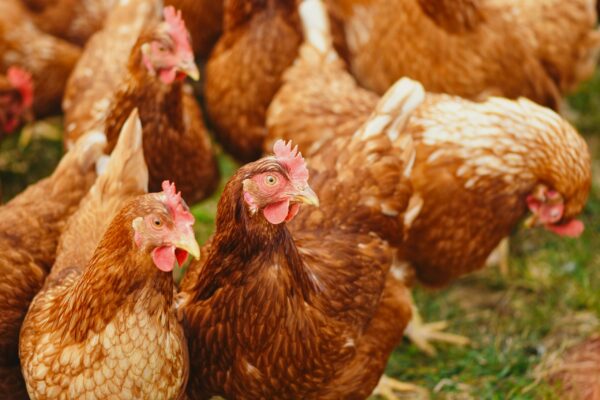Original article written as part of REA’s Spring 2024 Organics Recycling & Biogas Magazine.
The International Biochar Initiative (IBI) defines biochar as “a solid material obtained from the thermochemical conversion of biomass in an oxygen-limited environment”. In other words, an organic feedstock such as wood, manure or leaves is heated to a temperature between 300 and 800 degrees celsius, with very little oxygen present. This process, referred to as pyrolysis, produces biochar, a charcoal-like by-product rich in stable carbon. Yet, biochar differs from charcoal, which is mainly used as a fuel, in that its primary applications are in agriculture, horticulture and related fields.
Among the key physicochemical properties of biochar are its porous structure and high surface area. Typically, biochar boasts a surface area of 100-500 m2/g. As such, a single gramme of char has roughly the same surface area as a doubles tennis court. Furthermore, depending on the production parameters, biochar has a high number of functional groups on its surface. Due to these characteristics, it can retain water and nutrients as well as adsorb environmental pollutants. It also offers a suitable growing environment for many beneficial microorganisms.
An additional key attribute of biochar is its permanence. The carbon in biochar is highly stable and can endure in soil for thousands of years without being degraded by microorganisms. Thus, biochar represents a long-term CO2 sink that can sequester carbon in the soil virtually indefinitely. This makes biochar a promising Carbon Dioxide Removal (CDR) technology that can contribute to the mitigation of climate change and help work towards net zero goals.

Biochar has the potential to increase crop yields, plant health and soil quality.
Producing biochar from compost oversize:
Whereas virgin wood is regularly used for biochar production, the use of waste materials would be the best option and compost oversize would be an ideal feedstock. Compost oversize (the large or coarse materials that remain in the compost pile or bin after the composting process has taken place) represents a significant issue for the industry due to contamination from plastics and metals and can often end up in landfill. However, there is an increasing drive to clean it up and provide alternative uses, one of which could be the production of biochar.
The benefit of compost oversize is that it is predominately woody material, which is ideal for biochar production. It is a relatively simple lignocellulosic material which results in a clean biochar with a high carbon content. The challenges would be around contamination within the oversize. While the organic fraction would be fine, any metals would be detrimental to the process. Plastics, to a certain extent, would burn off during the pyrolysis process. However, heavy plastics may persist, which would make the biochar unsuitable for many applications.
Additionally, there is some concern about the chlorine content within compost oversize that has been co-mingled with food waste containing chlorine-containing materials such as PVC (polyvinyl chloride) plastics or chlorine-bleached paper products, which may be harmful to pyrolysis equipment.
Less of an issue but still to be considered is the requirement for pre-processing prior to pyrolysis. To maintain consistency in biochar production, the woody material needs to be reduced to a uniform size to ensure each piece is treated evenly in the process and the quality of the product is maintained.
Exploring biochar’s potential:
The multifaceted benefits of biochar include its diverse applications, many of which are outlined below. However, the list is not exhaustive:
Soil enhancement: The best-known for biochar is its use in soil improvement. When applied directly agricultural and horticultural soils or used in urban landscaping, biochar has the potential to increase crop yields, plant health and soil quality due to its ability to retain water and plant nutrients, loosen soil structure, and initiate humus formation. In addition, biochar can also bind nitrogen compounds such as ammonia and nitrate and prevent their leaching into the groundwater, making them available for plants instead. Biochar thus reduces the need for mineral fertilisers in agriculture. However, there are some caveats to this application. Recent research has shown that a biochar’s feedstock, and the soil type and crop to which the biochar is applied, can impact its effectiveness. Applications such as land remediation, urban landscaping and use on soils that are nutrient-poor gain the greatest benefit.
There is also increasing evidence that mixing biochar with compost can have beneficial effects on plant growth. There is an increasing body of research showing that adding biochar to the soil can have an impact on plant pests and diseases. A review of trials on the use of biochar and the effect on above-ground and below-ground plant pathogens concluded that the most common biochars in successful studies were from woody waste with success rates of 86 per cent for fungi and 96 per cent for bacteria.
The carbon in biochar is highly stable and can endure in soil for thousands of years without being degraded by microorganisms
However, the species of pathogen tested were far from exhaustive and many studies showed no effect at all. This further highlights the variability of the effects of biochar and that one size does not fit all. Feed additive: Biochar is already in use as a feed additive for a range of farm animals including cows, pigs and poultry, where it can prevent or treat digestive problems. This leads to improved feed conversion and hence faster weight gain and better meat quality.
The resulting biochar-enriched manure can be spread on arable land for enhanced crop production. Biochar acts as a carrier for plant nutrients and thus improves the effectiveness of manure from biochar-fed livestock. The requirements for a biochar to be used as a feed additive are quite stringent so only the best quality chars can be used. Biogas plants: Anaerobic digestion (AD) is a biological process through which microorganisms digest organic materials such as food waste, farm manure, or sewage sludge, and turn it into biogas and biological fertiliser. The biogas is either turned into electricity which is fed to the grid or upgraded to biomethane which is fed to the gas grid.
AD plants face multiple challenges, including process instability and low biogas yields. Also, high ammonia concentration can be toxic to the microbiology and excessive hydrogen sulphide in the biogas can damage the engines involved in electricity production. With its large surface area, biochar not only provides a substrate for the growth of beneficial microorganisms but also adsorbs inhibitory substances, thereby stabilising the digestion process and increasing biogas yields.

There are a limited number of companies that produce biochar specifically tailored to the biogas industry, but they have shown that these biochars can also improve methane concentration in the biogas, reduce ammonia concentration in the tank and reduce hydrogen sulphide in the gas. These factors can represent significant benefits for the biogas industry. Lastly, as the biochar is not consumed in the process it will come out in the digestate and can enhance the effectiveness of the AD digestate as a fertiliser.
The European Biochar Certification specifications look at various aspects of the biochar, with heavy metal concentration being a large part of the analysis. However, biochar that doesn’t fall into the categories that are suitable for land application can find an outlet. These are called basic materials, and the applications can be far from basic within industries such as construction (within lightweight concrete or insulation) and electronics (within the manufacture of supercapacitors or carbon-based nanomaterials). This means that biochars from wastes like sewage sludge, although not currently suitable for land application, can still find a market.
One tonne of biochar can sequester 2.5-3.0 tonnes of CO2 equivalents
Carbon sequestration strategies: the biochar connection
Anthropogenic climate change is driven by increasing amounts of CO2 in the atmosphere. Since the carbon in biochar is stable, biochar production can be used to sequester carbon in the soil for vast periods, contributing to climate change mitigation. The amount of CO2 sequestered depends on the amount of carbon in the biochar which in turn depends upon the feedstock and process parameters used, but typically one tonne of biochar can sequester 2.5-3.0 tonnes of CO2 equivalents.
The carbon sequestered in biochar can be represented and traded in the form of carbon credits. These credits can be purchased by environmentally conscious companies to offset their carbon emissions. At the time of writing, one tonne of biochar-based carbon fetched between €100 and €500 on the voluntary carbon trading platform Puro.Earth. The additional income from carbon credits can enable biochar makers to offer their products at a lower price, thereby contributing to the economic viability of the biochar industry.

What does the regulatory landscape look like?
Biochar is a relatively new but rapidly growing industry that is expected to play an important role in the decarbonisation of the economy. The European Biochar Market Report showed a production capacity of 53,000 tonnes per year at the end of 2022, which is expected to exceed 90,000 tonnes per year by the end of 2023. Similar increases in production capacity are expected to continue over the coming years.
Due to the novelty and current small size of the sector, in most European countries there is as yet no legislation dealing specifically with biochar. However, biochar has recently been approved as a fertiliser in the EU, which is one of several developments that are expected to boost the biochar industry.
In terms of biochar production, at present the most relevant certification system for biochar in Europe is the European Biochar Certificate (EBC), which includes specifications on permitted feedstocks, material characteristics, limits for problematic substances and production and use requirements. This provides certainty to biochar buyers that the product they are purchasing has been produced sustainably and satisfies the rigorous EBC quality standards. Consequently, many biochar manufacturers pursue efforts to obtain EBC accreditation for their product, but participation in the scheme is voluntary and does not form part of biochar legislation.
Biochar is an old material but a relatively young market, with extensive research being conducted into its possible uses. Due to its many attributes, biochar is finding itself being connected to a lot of potential markets. As with any new product, some of biochar’s applications will need to overcome legislative hurdles. Biochar is a growth industry and is set to play a large role in tackling climate change, the race to net zero and carbon sequestration. The industry, which will need good, abundant feedstocks, represents a viable alternative use for waste materials such as compost oversize.
What is CreChar®?
Our flagship product CreChar® is a functional and sustainable carbon material known as biochar, with numerous applications in industry and agriculture.
With its large surface area and its unique chemical composition, CreChar® can stabilize biological performance and regulate pH in anaerobic digestion and wastewater treatment plants. It also has the potential to create ideal growth conditions for functional and process-enhancing microorganisms that digest organic waste.
Thanks to these properties, CreChar® increases the stability and efficiency of anaerobic digestion and wastewater treatment processes. The increased efficiency means that an anaerobic digestion plant can produce around 10% more biogas from the same amount of feedstock or maintain its output using less feedstock.
To discuss how CreChar® can support your Anaerobic Digestion plant, reach out to us at lidia.krzynowek@carbogenics.com or david.vaughan@carbogenics.com




